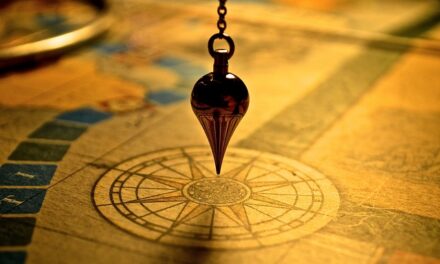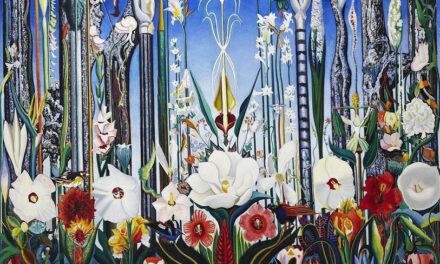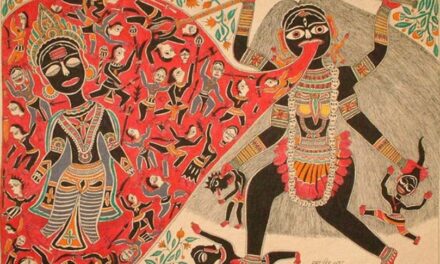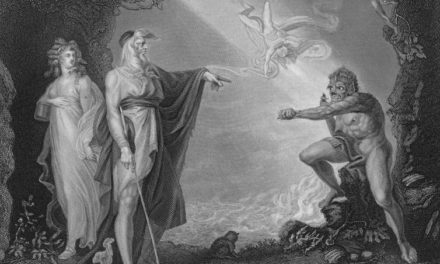Some people would take offense at the idea that religion is play. Religion, they would say, is sacred, and play is trivial. How can the one be lumped with the other? But I regard play as the highest form of human activity, so I am not demeaning religion when I describe it as play.
I have two main points to make. The first is that all of religion has its roots in play. The cognitive skills that make religion possible are the skills of play, the most central of which is make-believe. The second point is that religion functions best when it does not stray too far from its playful origins. Religion that has lost its playfulness can be dangerous. Here I outline some of the logic and evidence that leads me to these conclusions.
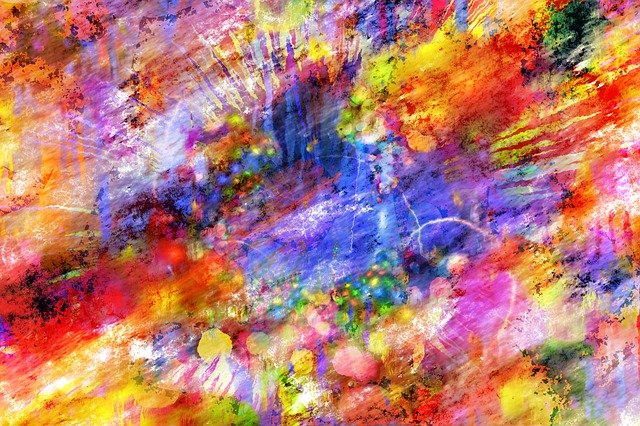
To Have Faith Is to Make Believe
The essence of all religion is faith. To have faith is to believe without evidence. To believe without evidence is to make believe. To make believe is to play.
All human play involves an element of make-believe (see essay on the definition of play). Each player accepts, for the duration of the game, a certain imaginary world. In chess, for example, the imaginary world is one in which miniature horse-shaped figures are knights, and knights can only move in L-shaped hops. The purest form of make-believe is found in the pretend play of young children, who regularly enter imaginary worlds in which they may be witches, or trolls, or space travelers, or mommies and daddies, and where the living room couch may be a haunted house, or a magic bridge, or another planet, or the office where the mommy works. To enter into a game players don’t ask for evidence that such and such is true, they simply decide or agree that it is true. Suzie is a witch and Jimmy is a troll, because all of the players have agreed to that. The truths of make-believe are truths by choice, not discovery, and so are the truths of religion. To accept a religion is to choose to believe in the religion’s truths; and in that sense, at least, all religion is play.
The truths of play are true as long and only as long as the play continues. When play is over, or during time out, Suzie and Jimmy may say that they were only pretending to be a witch and a troll; but they would never say that during play. In fact, it would be impossible for them to say that during play, because the very act of saying it automatically stops the play and creates a time out. Religion, for the devout, has no recognized time out; so the devotees may have no opportunity to say that their religious beliefs are make-believe, even if at some level of consciousness they know that that this is so.
(I ask the devout reader here, please, to take a brief time out, just to consider my thesis. You will not lose your religion by doing so. Your religious devotion may even profit from the exercise. Children improve their play, and become even more devoted to it, by taking time outs to think about and possibly reformulate the truths; and the same can happen for adults with religion.)
My thoughts about the playfulness of religion originated when I was about 11 years old, an age when many people begin to puzzle seriously about the world around them. I was a regular church and Sunday school attendee, and like some of my childhood colleagues I had difficulty understanding how people could believe the stories. It was clear to me that belief or lack of belief had nothing to do with rational intelligence. Some people far more intelligent and rational than I, and some less so, were devout believers. I remember thinking then that religion might be a kind of game–a life-long game that people knew was a game but would not say was one. It was like belief in Santa Claus, but more valued. It was belief that people held onto throughout life rather than just in early childhood.[1]
These childhood thoughts about religion lay relatively dormant in my mind until quite recently, when they were stirred up by my reading about hunter-gatherer religions. As I noted in an introductory essay, this whole series on “Play Makes Us Human” was inspired by my recent immersion in the anthropological literature on hunter-gatherers.

Hunter-Gatherer Religions Are Overtly Playful
I discovered, in my immersion, that hunter-gatherer band societies (as distinct from more complex tribal societies) have certain basic characteristics in common, wherever they are found. Among these characteristics is a high degree of playfulness, which runs through all aspects of their social lives, including their religions.[2] The overtly playful nature of hunter-gatherer religious beliefs and activities renewed my thinking about the the idea that religion everywhere has its origins in the human capacity for play.
Hunter-Gatherer Religious Stories Are Playful and Often Funny
All hunter-gatherer religions are polytheistic; there are multiple deities, and the deities themselves are playful. They are not arranged in a hierarchy of power, taking or giving orders, but are equal players in an ongoing drama that takes place in a spirit world that parallels the physical world in which hunter-gatherers live. The deities themselves are neither all good nor all bad, but are a mixture of the two, much like real people. They are often whimsical and unpredictable. They are not necessarily concerned with human morality. They may help or hurt a person just because they feel like doing so, not because the person deserves it.
A common character in hunter-gatherer religions is what mythologists call the “trickster,” a partly clever, partly bumbling, morally ambivalent being who manages to interfere with the best-laid plans of the other deities and humans. The trickster character is not necessarily represented in just one deity; it may be an aspect of personality that runs through most or all of them. The characteristics and actions of many of the deities are comical. Consistent with their egalitarian ethos and non-hierarchical means of governing themselves, hunter-gatherers do not worship their deities. They have no kings on earth, so they have no kings in heaven either. In fact, just as they use humor to level any members of their own band who show signs of arrogance (see last-week’s post), they also use humor to level any deities who might otherwise think too highly of themselves.
Here is an example, taken from Elizabeth Marshall Thomas’s book, The Old Way, about the Ju/’hoansi of Africa’s Kalahari Desert:
One of the most prominent Ju/’hoan deities, Gao Na, has characteristics that might, at first, lead us to view him as equivalent to the single god of modern monotheistic religions. Gao Na is the creator of the universe. He created first himself, then the other deities, and then the earth, water, sky, sun, moon, stars, rain, wind, lightning, plants, animals, and human beings. Yet, despite such creative power, Gao Na is not particularly powerful in other respects, and he is certainly not especially wise. In fact, the Ju/’hoansi delight in portraying Gao Na as a fool.
In Ju/’hoan religious stories, Gao Na, the creator of everything, is unable to control the beings he created and is continuously being outwitted by them. For example, his wives trick him, again and again, into jumping into a pit full of feces. They tell him that there is a fat eland under a pile of branches, and he leaps happily into the pile to get it, only to fall into the pit. Later, after he has cleaned himself up, they tell him another story, about some other prize under the branches, and he jumps in again.
Whenever I think of this story I am reminded of the classic comic-strip character Charlie Brown, who repeatedly believes that this time Lucy will not pull the football away when he tries to kick it. Like Charlie Brown, Gao Na never learns. We know, each time that Lucy sets him up, that Charlie Brown will fall for it. We feel sorry for him, and yet we laugh. That is the plight of us humans, and it is portrayed in Ju/’hoan religious stories as it was by Schultz on the comics page.
Hunter-Gatherer Religious Rituals Are Indistinguishable from Play
The religious practices of most hunter-gatherers include music, dances, sometimes costumes, and lots of overt play. The most serious religious ceremonies, for most hunter-gatherer groups, are those that involve shamanic exercises. The primary serious purpose of such ceremonies is healing, but the ceremonies also provide an opportunity for band members to interact personally, in all sorts of ways, with members of the spirit world. Individuals who have the power to do so (the shamans) enter into trance states in which they take on the properties of, and/or communicate with, specific deities.
One researcher, Mathias Guenther, notes that this altered state is generally reached “without hallucinogenic substances, but through a combination of drumming, singing, and dancing, coupled with physical exhaustion.” He writes further: “Often the shaman is a showman who employs rich poetic imagery and histrionics. He may sing and dance, trembling and shrieking, and speak in strange languages. He may also employ prestidigitation and ventriloquism. . . . Shamanic séances are very much performance events, not infrequently with audience feedback. They involve the shaman in role playing, engaging in dialogue with various spirits, each of whose counter-roles he plays himself.”[3]
Among some hunter-gatherer groups the whole band is involved in the dancing, singing, and drumming; all of them, effectively, are shamans or at least contributors to the shamanic experience. Among the Ju/’hoansi, roughly half of the men and a third of the women are able to enter into shamanic trances. When spirits are called forth in such exercises, in apparently any hunter-gatherer group, they are not treated reverently; they are treated much as the people treat each other. The communication may involve mutual joking, teasing, laughing, singing, and dancing, as well as requests for healing.
Anthropologists refer to the shamanic and other religious ceremonies as “rituals,” probably because that term has come to be used for any religious ceremony that has some sort of regular structure to it. But the ceremonies are clearly not rituals in the sense of strict, uncreative adherence to a prescribed form. In fact, some hunter-gatherer researchers have claimed that the religious “rituals” that they observed in the groups they studied were indistinguishable from play.[4] The ceremonies typically involve a great deal of the kind of self-determined, creative, imaginative, yet rule-guided action that fits the definition of play.
Hunter-Gatherers Do Not Confuse Religious Beliefs With Empirical Observations, and They Have No Concept of Heresy
Anthropologists have often described hunter-gatherers as practical people, not much given to magic or superstition. Shamanic healing seems to be an exception, but such healing may actually work to the degree that diseases have psychological components.
n general, hunter-gatherer religious ceremonies have more to do with embracing reality than with attempting to alter it. For example, in her book The Harmless People, Thomas describes how the /Gwi people (hunting and gathering neighbors to the Ju/’hoansi) use their sacred rain dance not to bring on rain but to welcome it and partake in its power when they see it coming. Living in the desert, where water is a limiting factor for all life, they might well dance to bring on rain if they thought it would work, but they do not believe they have such power. They can, however, rejoice in the rain and use its coming to raise their own spirits and prepare themselves for the bounty to follow. Another researcher, Richard Gould, in his book Yiwara, about a hunter-gatherer culture in Australia, makes the same point in stating that these people “. . . do not seek to control the environment in either their daily or their sacred lives. Rituals of the sacred life may be seen as the efforts of man to combine with his environment, to become ‘at one’ with it.”
From my perspective, such ceremonies are a form of play in which aspects of the natural world, personified in the deities, become playmates.
On the dimensions that distinguish religious liberals from religious fundamentalists in our culture, hunter-gatherers appear everywhere to be at the liberal end. Although hunter-gatherers find meaning in their stories about the spirit world, they do not treat the stories as dogma. Neighboring bands may tell similar stories in different ways, or may tell different stories, which contradict one another, but nobody takes offense. The sacred ceremonies of one band may be different from those of another, or may vary considerably over time. Hunter-gatherer parents do not become upset when their children marry into another group and adopt religious beliefs and practices that differ from those they grew up with. To leave one band and join another, with different religious practices, is in this sense like leaving a group who are playing one game and joining another who are playing a different game. There seems to be an implicit acknowledgment, among these people, that religious stories, while in some ways special and even sacred, are in the end just stories.
Hunter-gatherers value their beliefs about the spirit world, but they apparently don’t let those beliefs interfere with their empirical understanding of the physical world in which they live. Here is an example of that, again provided by Elizabeth Marshall Thomas. When Toma, a wise Ju/’hoansi, was asked, matter-of-factly, what happens to stars during the daytime, he responded, matter-of-factly: “They stay where they are. We just can’t see them because the sun is too bright.” But another time, in a religious frame, Toma answered the same question with a Ju/’hoan legend, in which the stars are antlions that crawl up into the sky at night and return to their sandy pits at dawn. He was apparently not the least bit upset by the contradiction between these two explanations. I wish that all religious people had Toma’s wisdom when it comes to such foolish controversies as that of evolution versus creationism!

Religion Is Sacred Play, Which Gives Meaning to Everyday Life
A general function of all play is to give meaning to people’s lives and to help them cope with the real world. As I described in an earlier post, play helps children come to grips with reality. Playing at being witches and trolls, for example, helps young children think about and understand aspects of their real world that would be hard to understand otherwise. This is true even though the children clearly recognize that the play world is imaginary, not real. In fact, play would not serve its purpose if children did not recognize that distinction.
Religion, properly conceived, is a grand and potentially life-long game in which people use the basic structures of the game–the story outlines, beliefs, and rituals–along with their own creative additions and modifications, to make sense of their real world and real lives. The stories and beliefs may be understood as fictions, but they are sacred fictions because they represent ideas and principles that are crucial to living in the real world and they may be held through all of life.
It is not surprising, from this view, that religious stories and beliefs everywhere reflect and elaborate on ideas and themes that are crucial to the society in which the devotees live their real lives. Hunter-gatherers depend on principles of equality and sharing, and so it is natural that their deities are not rulers but equals, who contribute and sometimes fail to contribute, as they will. Hunter-gatherers also depend, every day, on the whims of nature, which they cannot control, so it is not surprising that their deities are whimsical. The best way to deal with unpredictability is through humility and humor, and their religions foster those traits. Their task is to embrace nature, not to control it, and their religious play with the spirits of the natural world help them to do that.
With agriculture, religion changed. Agriculturalists attempt to control nature, and so the gods of agriculture are controlling gods. With agriculture, and with the land ownership and accumulation of wealth that accompanies it, egalitarianism lost its sway and concepts of lords and masters, and of servants and slaves, emerged. It is not surprising, then, that hierarchical concepts of the spirit world emerged in post-agricultural religions–peaking in the Middle Ages, in the dominant monotheistic religions, Islam and Christianity. At a time when most people were servants, it was only natural that religious stories and beliefs would focus on the value of servitude and duty to lord and master, and that God would be understood as the supreme master, the king of kings, lord of lords. Such beliefs gave meaning to a life of servitude and helped the rulers to justify their power.
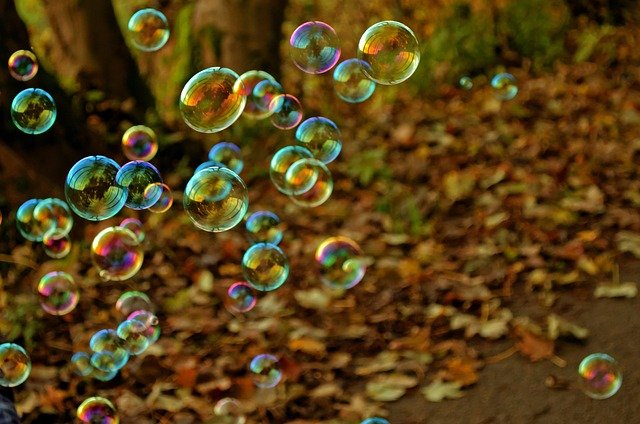
Religion Turns Bad When the Element of Play is Lost
As religion evolved (or should I say devolved) from the hunter-gatherers’ comic pantheons to the medieval monotheisms it became less playful and more dangerous. As nature became an enemy rather than a friend, and as the spirit world became hierarchical, the element of fear began to overwhelm the element of play. God became not a playmate, but the supreme source of punishment and reward, to be worshipped, served, and feared. As religion became serious, people began to confound the imaginary religious world with the real world.
If children playing that they are witches and trolls did not know that they were just pretending, we would worry. We know, for children, that failure to distinguish imagination from reality can be dangerous. We should know that this is even truer in the case of adults and religion.
The religions that emerged with agriculture and feudalism have promoted horrors that would be unimaginable to hunter-gatherers. The Aztecs sacrificed human beings to their angry gods. Christians tortured people they called witches and murdered heathens mercilessly. Today among some groups of Islamists we find promoters of suicide bombings, who put religious beliefs above their concerns for people. If service to God is the highest value, and if God is fearsome and egotistical and punishing, and if religion is confounded with reality, then all these horrors in the name of religion become possible. Religion of that type does not “make us human,” in the sense by which I mean that statement in the title to this series.
The remarkable thing, today, is that as our societies continue to evolve so do our religions. As we have left medievalism and entered an era of growing democracy, many people have taken the monotheisms of their ancestors and made them more playful. God becomes once again a friend rather than a power to be feared. People stop arguing about which religion is right. They begin again to acknowledge that such arguments make no more sense than do arguments about whether chess or checkers is the one true game. If this hopeful trend continues, we may complete the circle and once again enjoy playful religion as hunter-gatherers did.
To keep religion on the side of humanity instead of against it, we need continuously to refresh its playfulness. Sacred play promotes the best of our human nature, improves our wellbeing, and is fun. Religion lacking play is suicidal.

Notes
[1] I have since learned, of course, that my early thoughts about religion as a game were not original. A number of highly respected theologians and theological scholars have put these same ideas into writing. One such book, for example, is David L. Miller’s (1970) Gods and Games: Toward a Theology of Play. An interesting and relatively recent article on the topic is “Play and Religion: Indication of an Interconnection,” in the Journal of the Asian Research Center for Religion and Social Communication, 2 (#1), 2004. There, K. P. Aleaz, an Indian scholar, makes a special case for the playfulness of Hindu religions, which, more than most other modern religions, have retained their historic folk-religion roots.
[2] An account of my conclusions from this immersion into the hunter-gather literature can be found in my article, *Play as the foundation for hunter-gatherer social existence. American Journal of Play, 1, 476-522, 2009.* Most of the ideas in the present series of essays, on “Play Makes Us Human,” are presented there with documentation. In this essay I have repeated, in parts of several paragraphs, some of the same language I used in that larger article.
[3] Mathias Guenther, “From Totemism to Shamanism: Hunter-Gatherer Contributions to World Mythology and Spirituality,” in R. B. Lee & R. Daly (Eds.), The Cambridge Encyclopedia of Hunters and Gathers (1999), 426-433.
[4] See, for example, Daisaku Tsuru, “Diversity of Ritual Spirit Performances among the Baka Pygmies in Southeastern Camaroon,” African Study Monographs, Suppl. 25 (1998), 47-83.
Originally published in Psychology Today.


